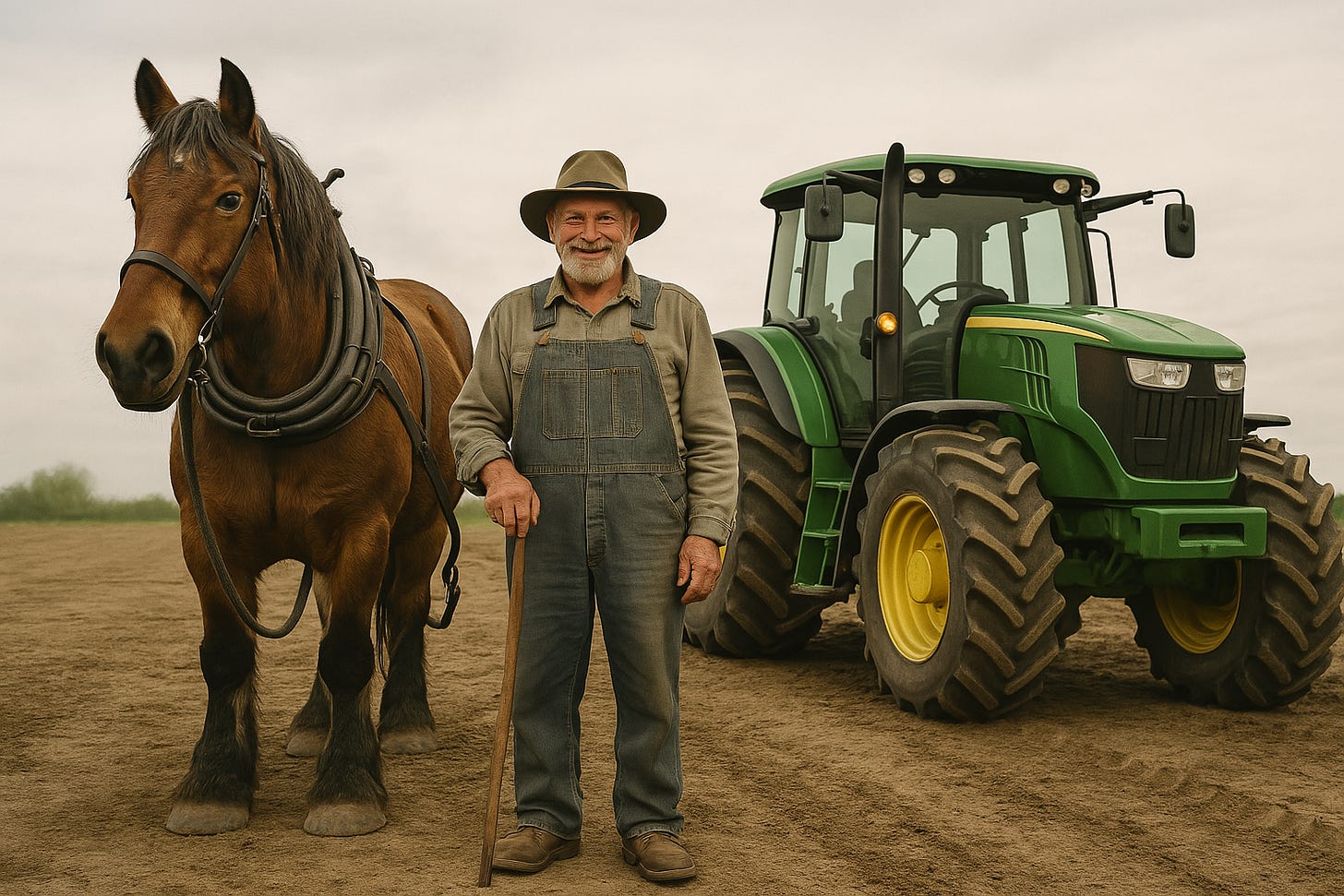AH (Artificial Horses) Made Farmers 62.5 Times More Productive
Compared to 1800, we have 2.64 percent more farmers today with 6,315 percent more people.
In 1800, the U.S. Census Bureau recorded a population of 5.3 million. Roughly half—about 2.65 million—were farmers. Today, the U.S. population is nearing 340 million, yet the number of farmers has risen only slightly to 2.72 million.
Back then, one farmer fed just two people. Today, each farmer feeds 125. While the population has grown by a factor of 64, farmer productivity has increased nearly as much—by a factor of 62.5.
Note that life expectancy in the U.S. in 1800 was around 37 years. Today it’s closer to 77. While medicine and sanitation and other factors contributed to the additional 40 years of life, farmers creating food abundance has played a major role.
According to Malthus, Ehrlich, and Thanos, this wasn’t supposed to happen. But reality tells a different story: more life creates more knowledge, which leads to better tools and more abundant resources. This produces a virtuous spiral of knowledge discovery and value creation.
Farmers were early adopters of AH (artificial horses). Will AI do for workers today what AH did for farmers over the last 225 years?
Learn more about our infinitely bountiful planet at superabundance.com. We explain and give hundreds of examples why more people with freedom means much more resource abundances for everyone in our book, Superabundance, available at Amazon.
Gale Pooley is a Senior Fellow at the Discovery Institute, an Adjunct Scholar at the Cato Institute, and a board member at Human Progress.
You can now book Gale to speak about Superabundance and the new economics of human flourishing to your organization at All American Speakers.






